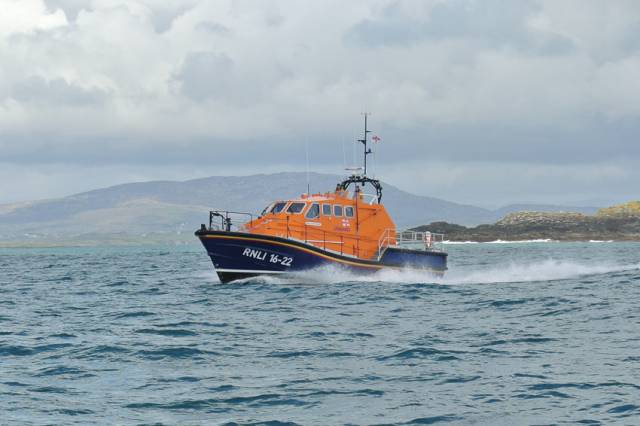The first of three callouts in 24 hours for Baltimore’s RNLI lifeboat volunteers was yesterday morning (Tuesday 25 June), when the all-weather lifeboat was launched to provide medical assistance and evacuation to a man on Cape Clear Island.
The lifeboat arrived at North Harbour in Cape Clear at 11.27am, 20 minutes after launch. The casualty was brought onboard within three minutes and the lifeboat returned to station in Baltimore, handing the casualty over to the care of the waiting HSE ambulance crew at 11.56am.
Baltimore RNLI was called out for a second time in the afternoon to a pleasure boat with engine trouble near the Kedge, east of Baltimore Harbour.
The inshore lifeboat was launched at 3.34pm at the request of the Irish Coast Guard to assist the 31ft pleasure boat, with two onboard, that had broken down east of Kedge Rock which is one mile south-east of the harbour entrance.
The lifeboat, helmed by Kieran Collins with crew members Ian Lynch and David Ryan, reached the casualty vessel at 3.45pm and immediately secured a tow line to its bow.
After confirming the two people onboard were safe and well, they towed the vessel back to its own mooring within Baltimore Harbour.
The third callout came early this morning (Wednesday 26 June) with another medevac, this time from Sherkin Island.
The Baltimore all-weather lifeboat arrived at Sherkin pier at 5.32am, just 10 minutes after launch, and the casualty as brought to the waiting ambulance crew in Baltimore at 5.48am.
Speaking following the callouts, Baltimore RNLI volunteer lifeboat press officer Kate Callanan said: “Our volunteer lifeboat crews are always ready at any time of the day or night to help people in need.
“If you find yourself in difficulty or in need of medical assistance at sea or along the coastline, call 999 or 112 and ask for the coastguard.”
































































